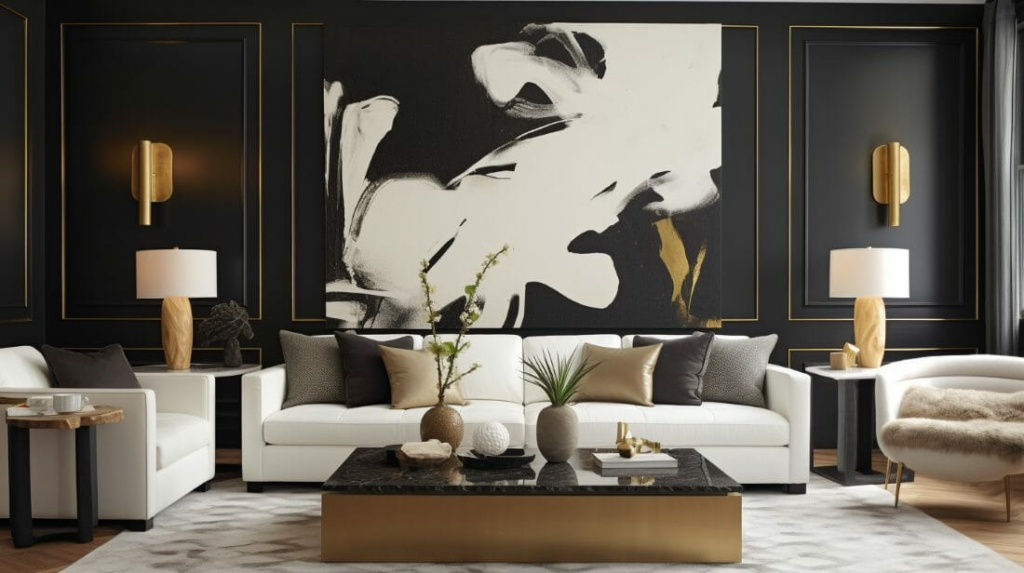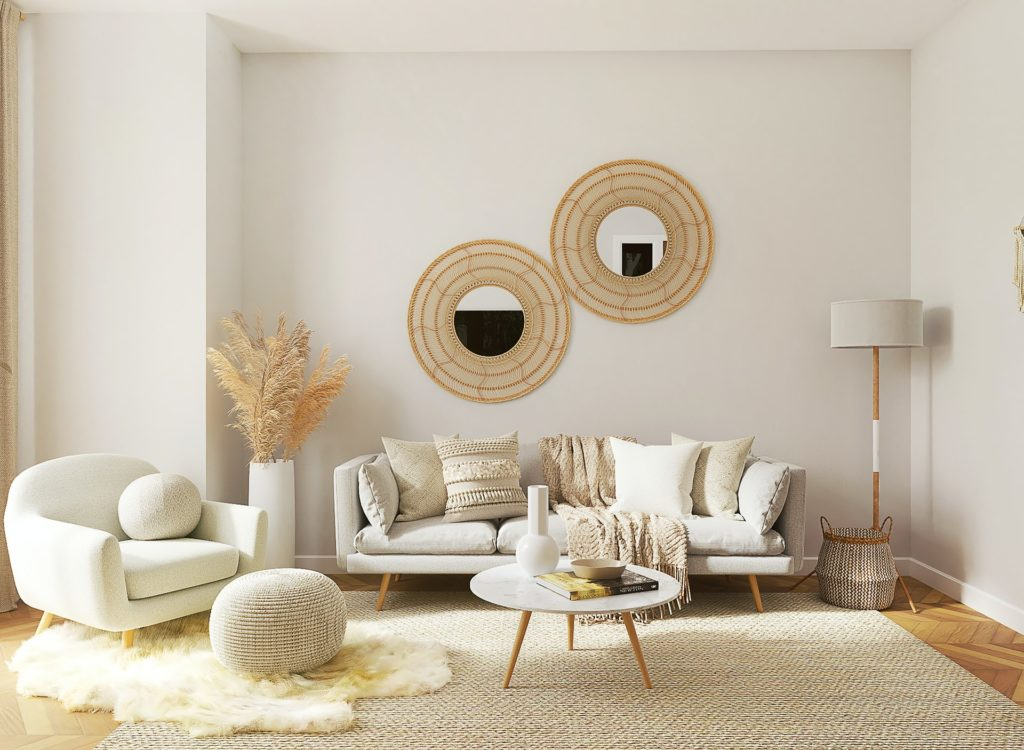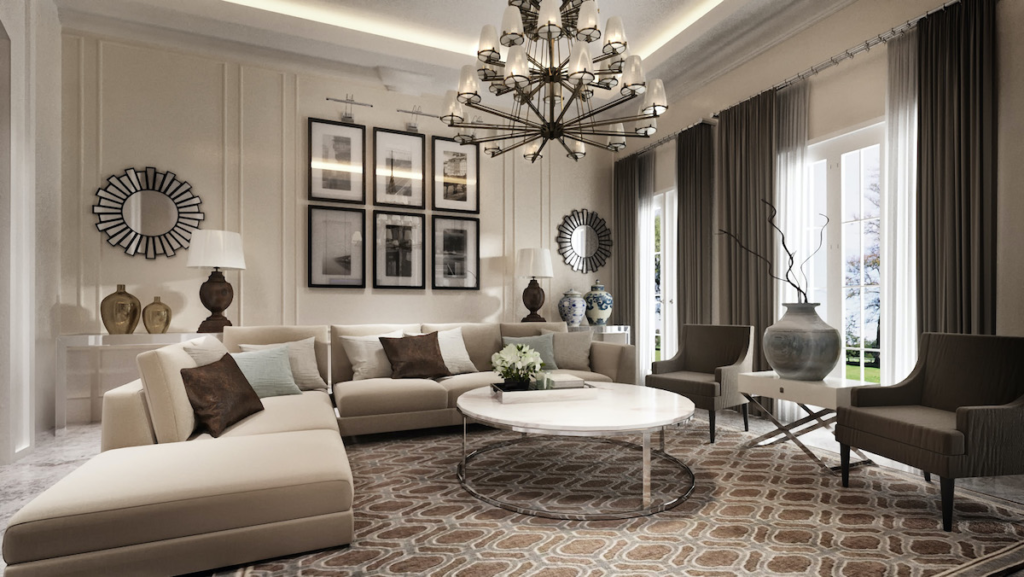Interior design is much more than arranging furniture or choosing colors. It is a thoughtful process grounded in design principles that guide how spaces are planned and executed. For aspiring or professional interior designers, understanding these principles is the foundation of creating harmonious, functional, and aesthetically pleasing interiors. Let’s delve into the fundamental design principles every interior designer must master.
1. Balance: Achieving Visual Stability

Balance refers to the distribution of visual weight within a space. It ensures that no area feels too heavy or empty, promoting harmony and order.
- Types of Balance:
- Symmetrical Balance: Found in traditional interiors, it involves mirroring elements (e.g., identical chairs on either side of a table).
- Asymmetrical Balance: Common in modern designs, it achieves equilibrium through unequal yet visually harmonious elements (e.g., a large sofa balanced by two smaller chairs).
- Radial Balance: Elements are arranged around a central point, often used for circular layouts like dining rooms with round tables.
- Application: Place heavier furniture pieces strategically to anchor a room, and distribute decorative items evenly for a balanced appearance.
2. Proportion and Scale: The Harmony of Size
Proportion is the relationship between the size of objects, while scale relates to how an object fits within the room.
- Key Considerations:
- Avoid oversized furniture in small rooms or tiny decor in large spaces.
- Maintain consistent proportions between elements, such as the size of a coffee table relative to the sofa.
- Tips: Use the “golden ratio” (1:1.618) as a guide for harmonious layouts.
3. Rhythm: Guiding the Eye Through the Space

Rhythm creates a sense of movement in a room by directing the viewer’s attention.
- Techniques:
- Repetition: Repeating patterns, colors, or textures to create cohesion (e.g., matching cushions and curtains).
- Alternation: Alternating design elements like light and dark tones.
- Progression: Gradually increasing or decreasing the size or intensity of an element (e.g., arranging decor items from smallest to largest).
- Application: Place decor elements like artwork, lighting fixtures, or rugs in patterns that lead the eye naturally around the room.
4. Emphasis: Highlighting Focal Points
Every room should have a focal point that draws attention and anchors the design.
- Examples:
- A fireplace, an accent wall, a large window, or a piece of art.
- In minimalist interiors, a bold furniture piece or light fixture can serve as the focal point.
- How to Enhance Focus:
- Use contrasting colors, textures, or lighting to highlight the chosen focal point.
- Avoid overcrowding the area with too many competing elements.
5. Unity and Harmony: Ensuring Cohesion

Unity and harmony tie all the design elements together, creating a seamless and cohesive look.
- Tips to Achieve Harmony:
- Stick to a consistent color palette and materials throughout the space.
- Ensure that furniture and decor items share a common style or theme.
- Practical Example: In a coastal-themed room, use natural materials, soft blues, whites, and nautical motifs to maintain unity.
6. Contrast: Adding Visual Interest

Contrast injects energy and dynamism into a design by juxtaposing different elements.
- How to Use Contrast:
- Pair light and dark shades (e.g., black and white) for striking visuals.
- Mix textures like smooth surfaces (glass) with rough ones (wood or brick).
- Combine modern and vintage furniture for an eclectic feel.
- Caution: Use contrast sparingly to avoid visual clutter.
7. Space: Optimizing the Layout
Space is the canvas on which design elements are arranged, making it critical to use effectively.
- Types of Space:
- Positive Space: Areas occupied by furniture and decor.
- Negative Space: Empty areas that provide breathing room and balance.
- Tips:
- Avoid overcrowding by leaving sufficient negative space around furniture.
- Use layouts like the “rule of thirds” to create pleasing proportions.
8. Texture: Adding Depth and Dimension

Texture refers to the surface quality of materials, adding tactile and visual interest.
- Examples:
- Soft textures (rugs, cushions) make a room feel cozy.
- Smooth textures (glass, metal) lend a modern, sleek vibe.
- Rough textures (wood, stone) create a rustic or natural look.
- Practical Tip: Layer multiple textures in a room (e.g., a plush sofa with a knitted throw and a leather armchair) for depth.
9. Color: Setting the Mood
Color is one of the most powerful tools in interior design, influencing mood and perception.
- Color Psychology:
- Warm tones (reds, oranges, yellows) evoke energy and warmth.
- Cool tones (blues, greens) promote calm and relaxation.
- Neutral shades (grays, whites, beige) provide a timeless and versatile backdrop.
- Tips: Use the 60-30-10 rule: 60% dominant color, 30% secondary color, and 10% accent color.
10. Light: Enhancing the Atmosphere

Lighting affects how a space looks and feels, making it a crucial design element.
- Types of Lighting:
- Ambient: General lighting like ceiling fixtures.
- Task: Focused lighting for specific purposes (e.g., reading lamps).
- Accent: Highlighting features like artwork or architectural details.
- Tips: Use a mix of natural and artificial lighting to create layers and adjust the mood as needed.
Conclusion
Mastering the basics of design principles is the first step toward becoming a successful interior designer. By applying concepts like balance, proportion, rhythm, and unity, you can create spaces that are functional, beautiful, and meaningful. Whether designing for clients or personal projects, these principles will serve as your guide to achieving stunning results.
Ready to dive deeper into interior design? Start experimenting with these principles in your projects to develop your skills and creative eye.
